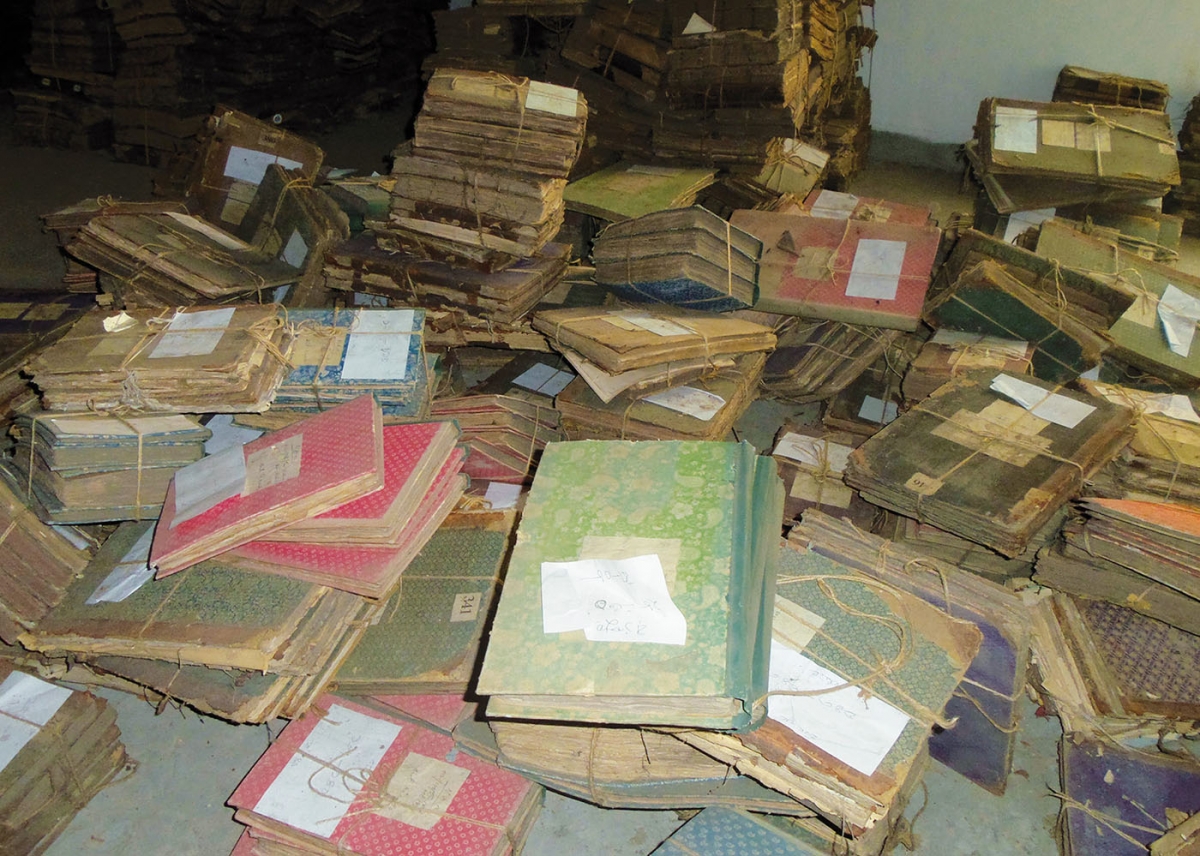East India Company Archives in Bangladesh
During the period of the East India Company’s authority in Bengal, the Company stationed a ‘Collector’ in Rangpur (now in northern Bangladesh). The Collectors, of whom the most famous was Warren Hasting's envoy to Bhutan and Tibet, George Bogle (1746-81), were responsible for the Company's commercial relations across territory that stretched to the borders of Sikkim, Bhutan and Assam. Even though a selection of the Collectors' records were published between 1914 and 19271 , the collection has apparently never attracted scholars. Rangpur, a local archive in a remote district that has endured floods, famine and civil war, as it passed from the control of British colonial India to independent (East) Pakistan, before becoming part of Bangladesh in 1971, seemed to hold few attractions for scholars.
But browsing the entire collection of the hitherto-neglected Rangpur records promised to be of considerable value to my research on the history of Sikkim, for during the late 18th century the Rangpur Collector was the main source of political and commercial information about Sikkim, as well as Bhutan and Tibet. And Bangladesh is now not only open to scholars but - Islamic fundamentalism aside - increasingly stable and easily accessible, while the scholastic value of such regional archives is now widely recognised.
Thus I recently visited Bangladesh to enquire about this archive, thinking that even if nothing was left besides insect-eaten documents then at least I could inform other researchers of the situation there. In the Bangladesh capital, with assistance from Dhaka University professors, I began by enquiring about any other EIC archives, but the National Museum Library confirmed that all of the primary sources for the nation's history were now held at the National Archives of Bangladesh on Syed Mahbub Morshed Ave. All regional archives for the 1770s-1880s period were originally collected at the National Library in 1985-86 before being transferred to the custodianship of the National Archives in 2006. Among them were the early Rangpur District Records, and as only more recent records are now kept in Rangpur, I had at least discovered that there was little point in my travelling there. And indeed, the National Archives catalogue indicate that Rangpur District records for the period from July 1777 to March 1889 are part of their collection comprising 516 bound volumes of documents, volumes that would surely shed considerable light on many historical processes in the region.
But, Senior Archivist Mr. Elias Miah told me that, "we may not be able to provide all the relevant documents you need because these documents are not properly arranged yet and are in a process of arranging systematically". I had the chance to enter into the record room and what I saw confirmed that without additional manpower and funding there is little prospect of that process being completed in the near future. Scholars probably have some years to wait before the material is available. In the meantime their condition is worrying, the records are not well maintained and are scattered around the record room. I took some photographs and with just a handful of documents relevant to my work I returned to India.
Rajiv Rai, Research Scholar, Department of International Relations, Sikkim University (rajivrai844@gmail.com).
